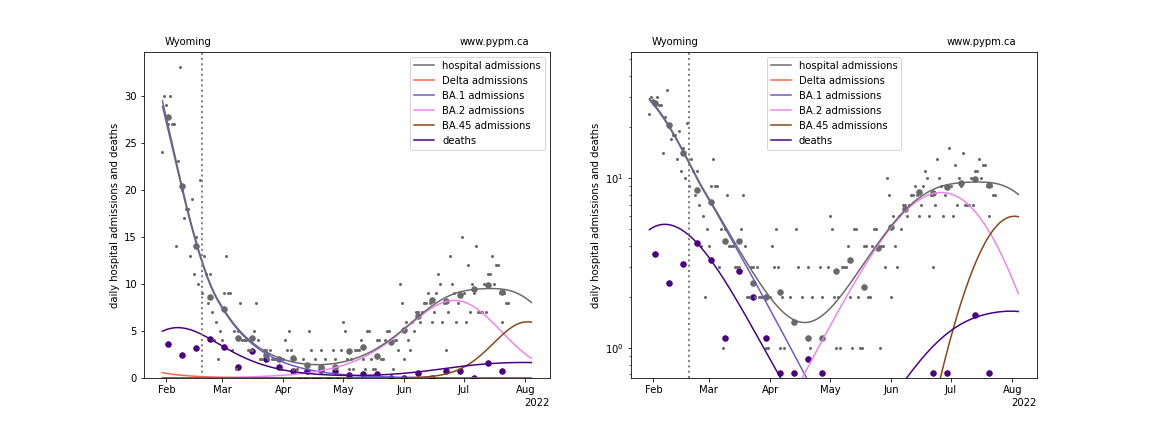July 24, 2022 Analysis of US state data
This report shows the result of analyses that use hospital admission data to estimate the transmission rates in the past few months to characterize the recent Omicron waves. The only parameters adjusted are the transmission rates and normalization constants. Hospital admission data are used, to avoid testing capacity issues and to better predict future hospital admission rates.
The Omicron variants are assumed to have a much larger susceptible population, due to its ability to evade immunity (natural and vaccination immunity). For this study, those immunized against earlier strains only have 20% effective immunity against omicron.
Booster doses have been included in this analysis, and are assumed to raise the vaccine effectiveness from 20% to 80% with a time delay given by a gamma distribution with mean 10 days and standard deviation 5 days. The Omicron variants are also assumed to produce more infections that go undetected as cases (as compard to Delta).
In the figures below, the small dots show daily values, and the larger circles are weekly averages to help guide the eye.
The vertical dashed lines show where the transmission rate is changed in the model to better fit the data. Few changes to transmission rate are needed. If the susceptible fraction is constant (immunity not changing quickly), constant transmission rates lead to steady exponential growth or decline. With immunity growing, the curves bend downwards due to the herd effect.
With the large number of BA.1 infections providing natural immunity, the model predicted turn-overs in hospital admissions in BA.2 in the previous report. The new Omicron variants (BA.4 and BA.5) are combined as a new strain in this analysis, and labelled as BA.45. The strength of the BA.45 wave that is apparent in the data forces the model to reduce natural immunity from the earlier Omicron infections. For these analyses, the natural immunity from Omicron infections wanes with a mean time of 200 days.
There are a number of assumptions made to characterize population immunity and as a result these forecasts have a great deal of uncertainty.
Individual state hospitalization analyses
The plots for each state below show the daily hospital admissions and deaths since early February on a linear scale (left) and log scale (right). The figures show how the model attributes admissions from Delta and Omicron infections. For some states, the new BA.45 strain is not yet included in the model.
For most states, BA.4 and 5 rose to dominance before the BA.2 wave had subsided and as a result the hospital admission data does not show a separate wave for BA.45. For some states, the separation is evident (Eg. Michigan, New York, and others).
Alaska
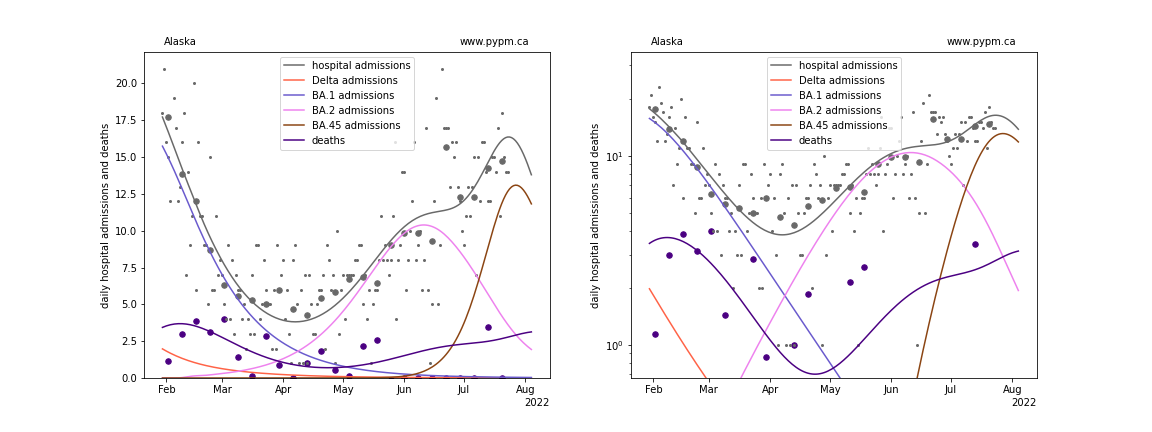
Alabama
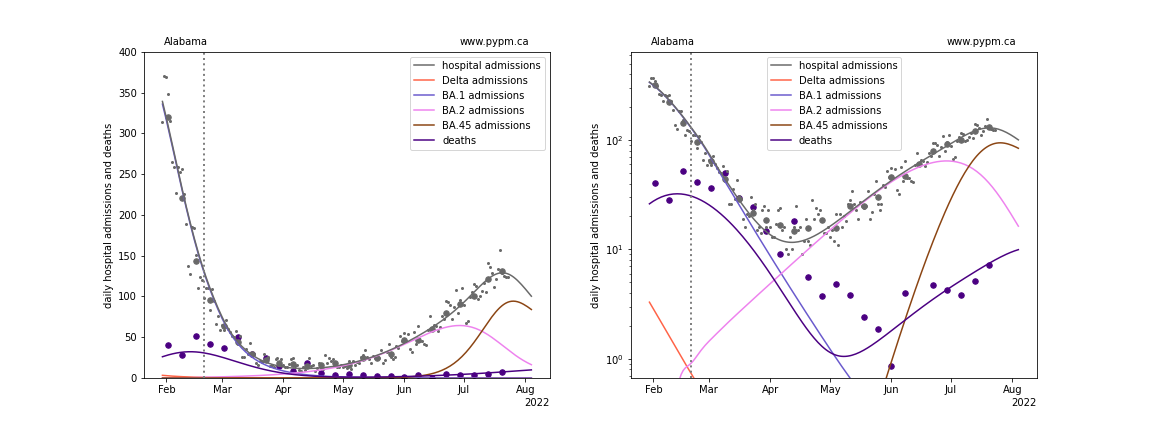
Arkansas
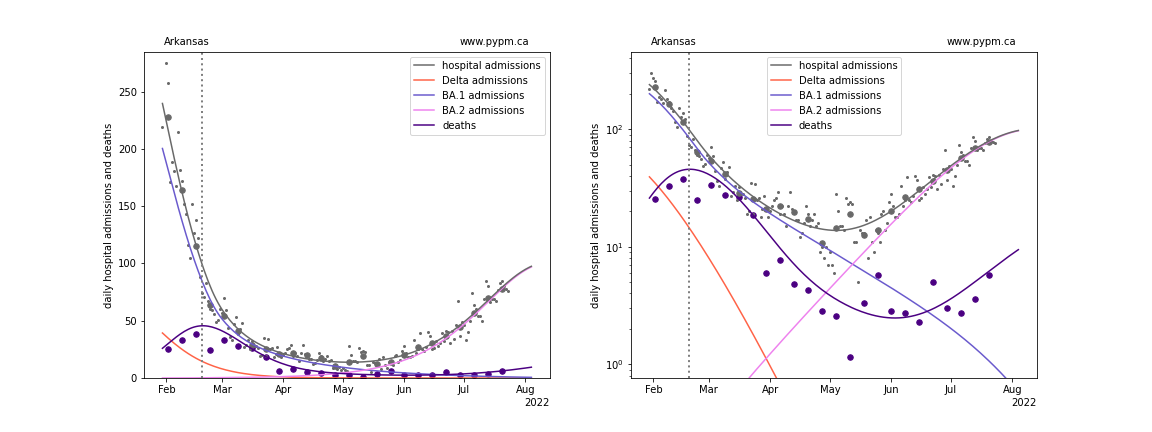
Arizona
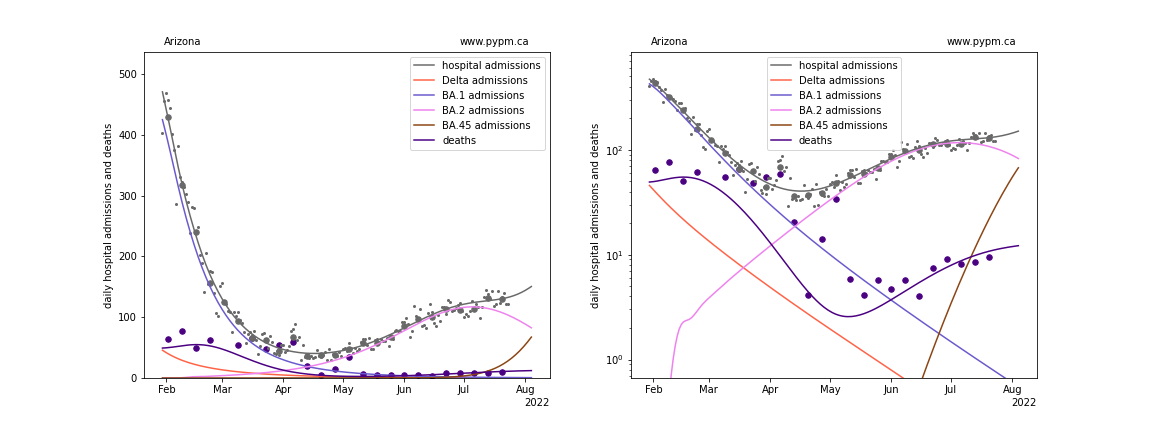
California
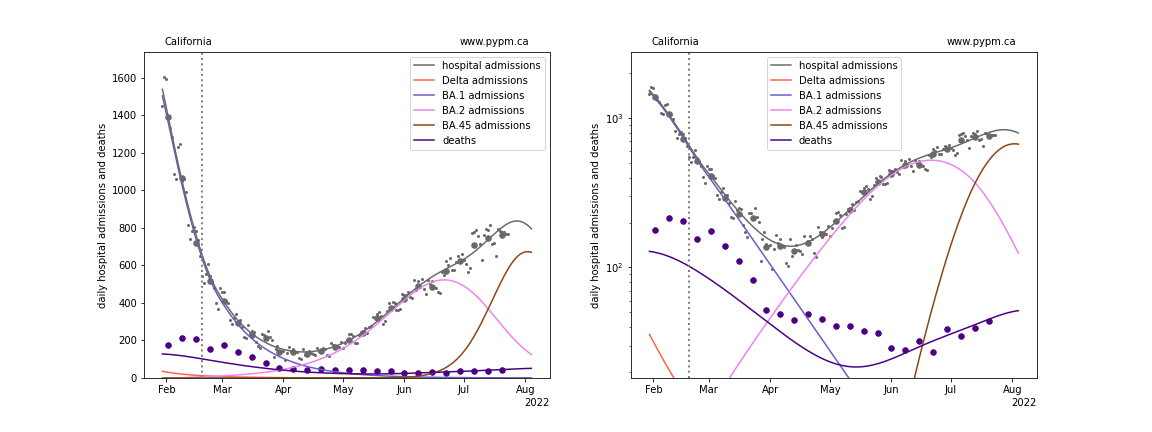
Colorado
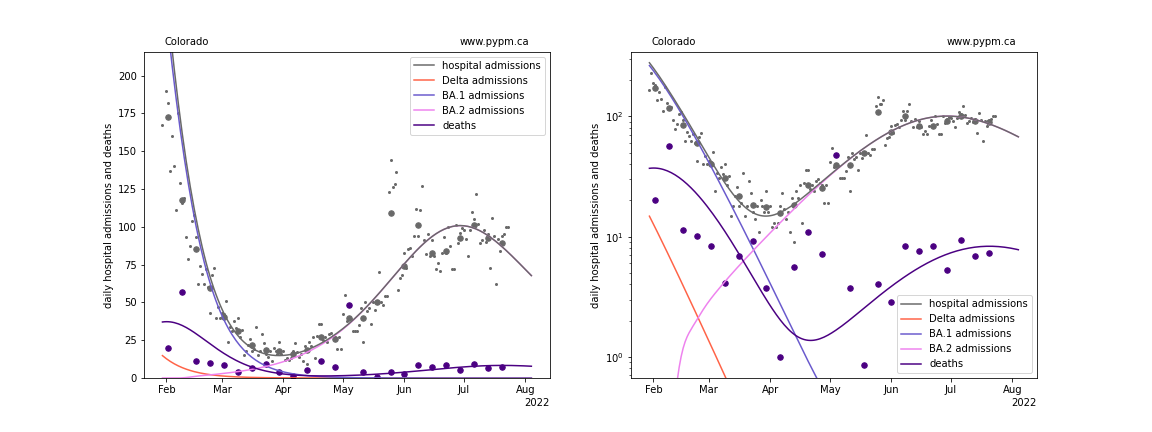
Connecticut
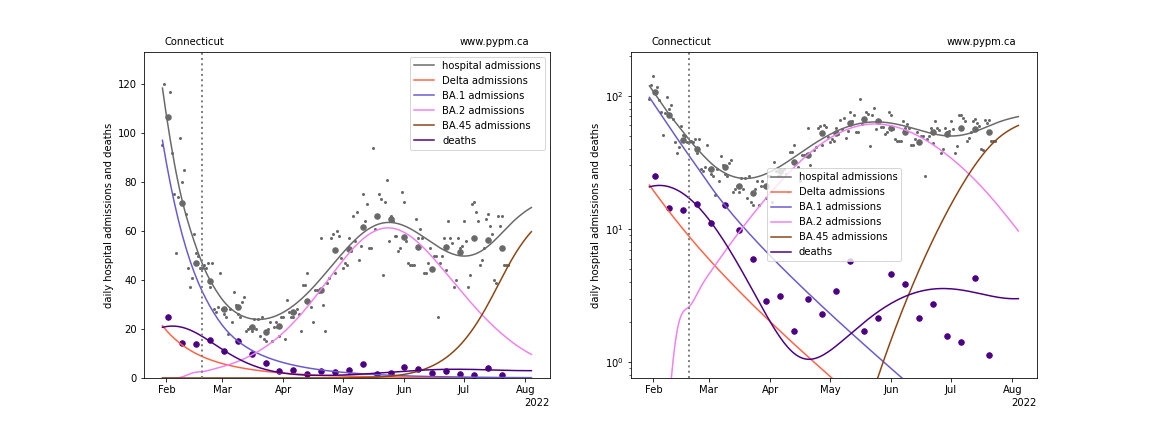
District Of Columbia
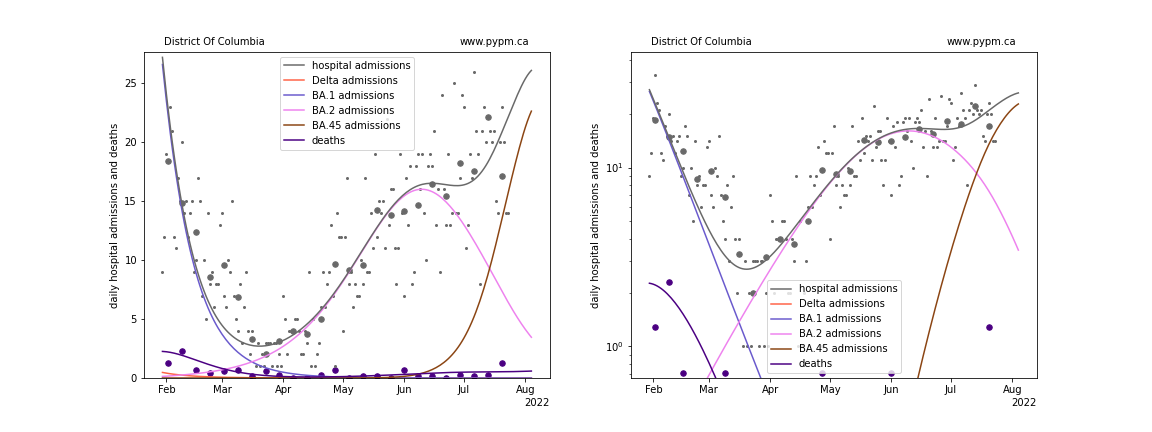
Delaware

Florida
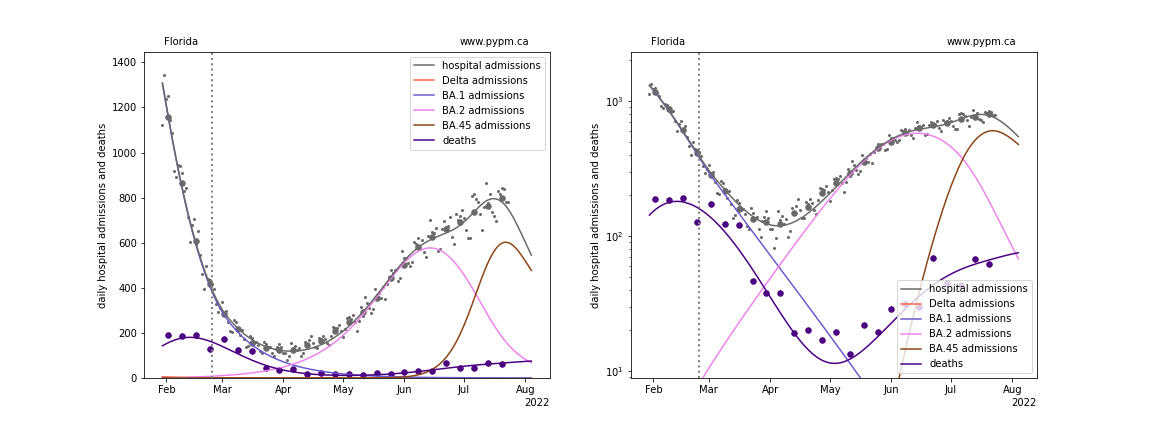
Georgia
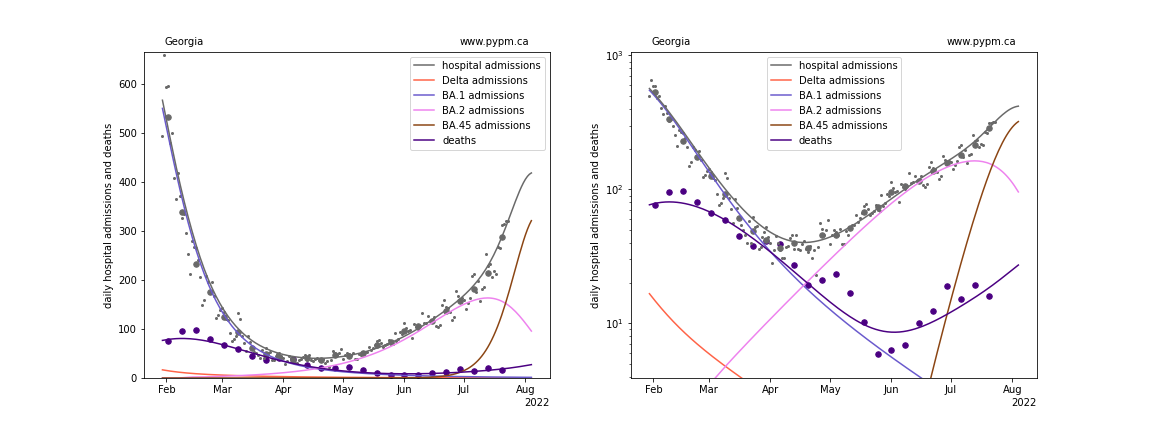
Hawaii
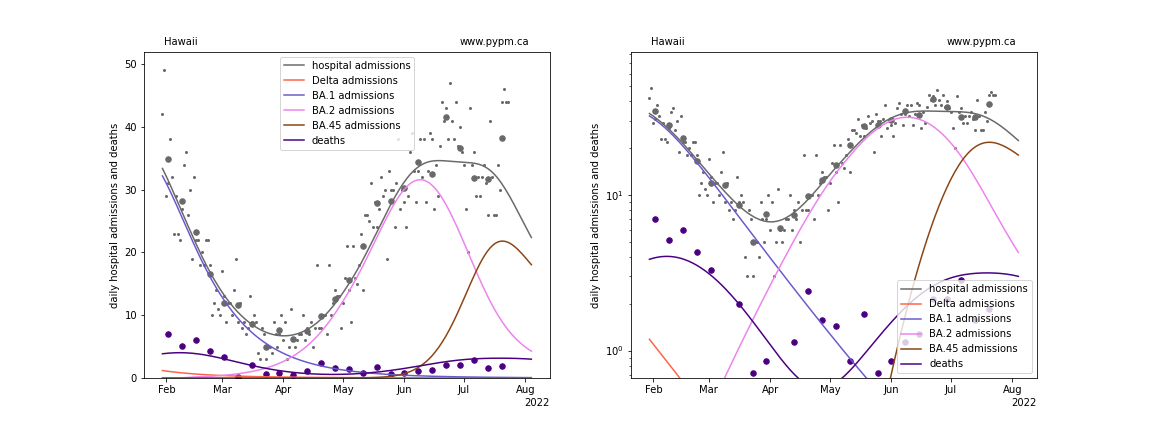
Iowa
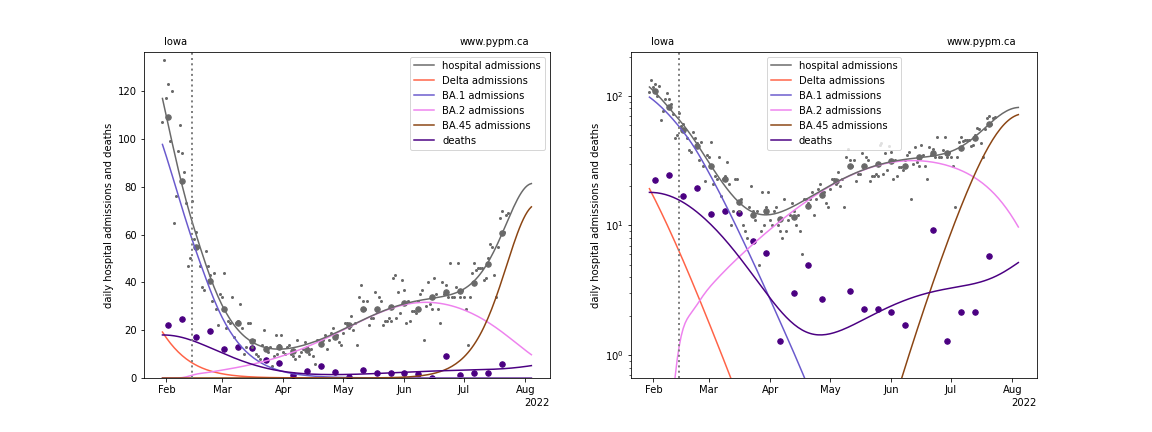
Idaho
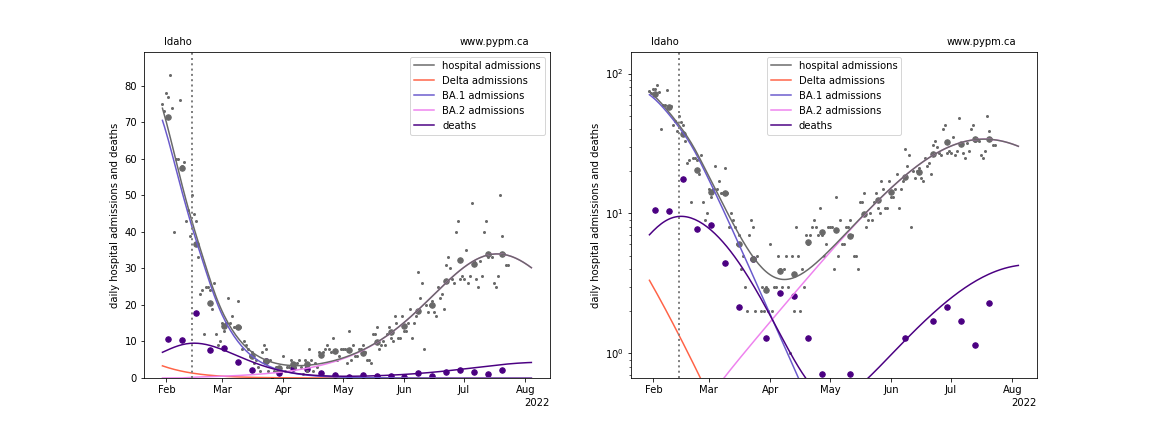
Illinois
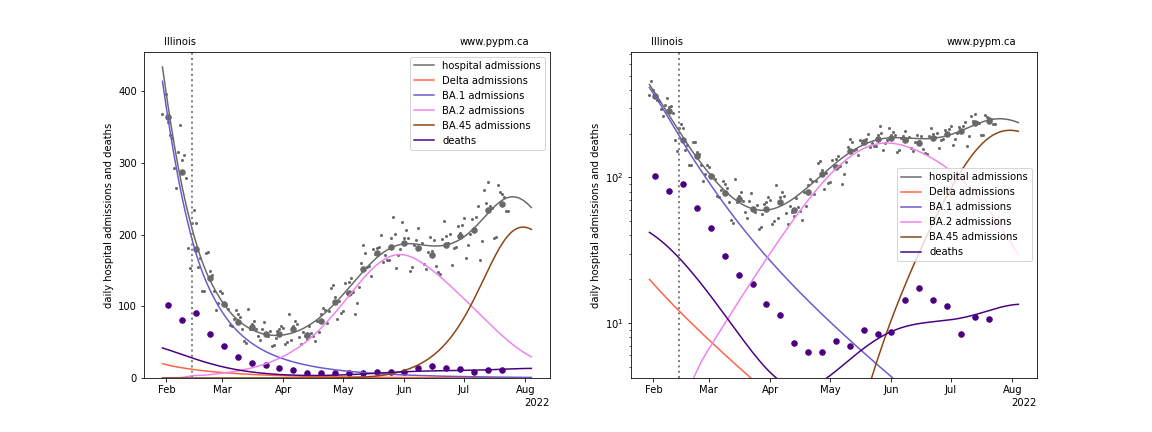
Indiana
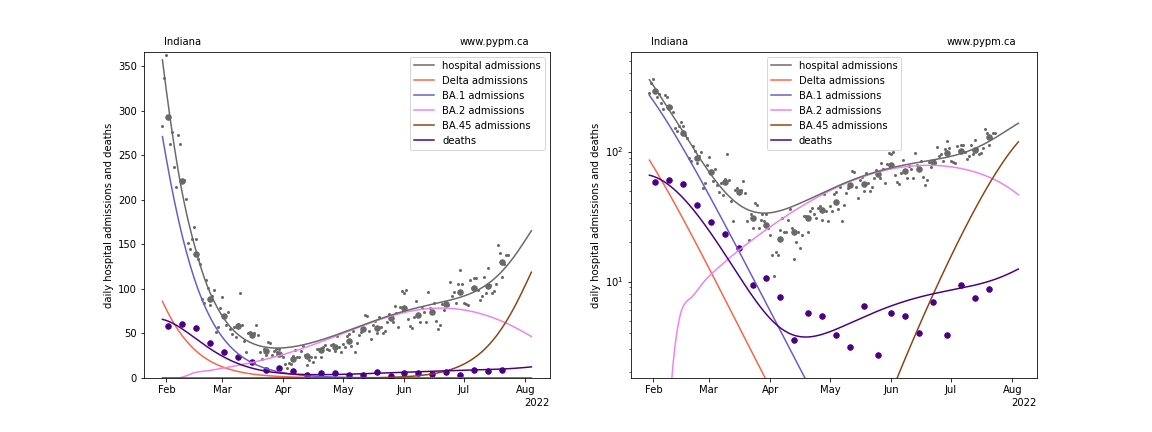
Kansas
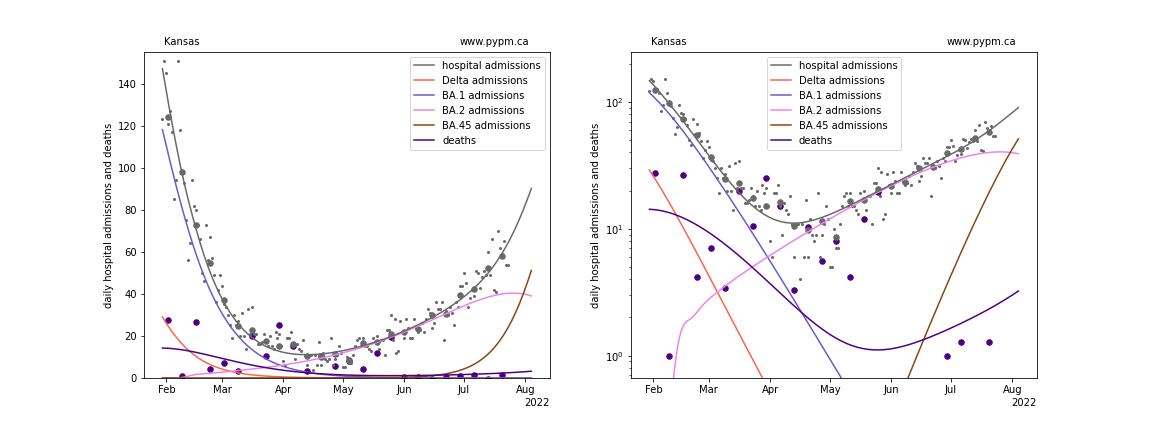
Kentucky
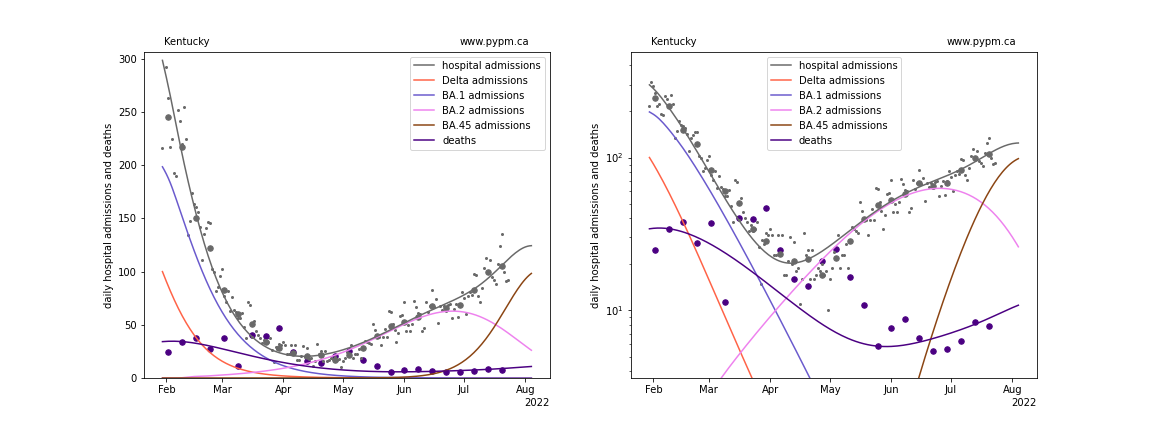
Louisiana
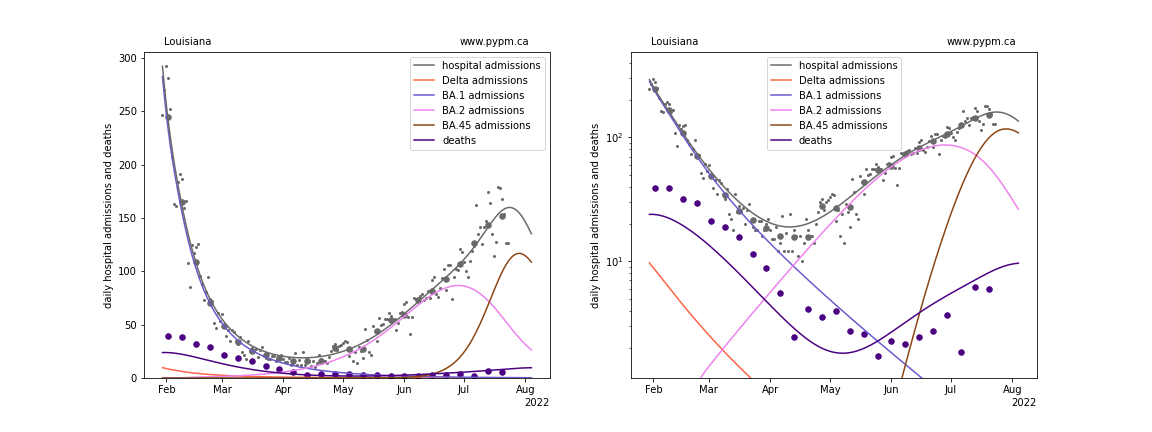
Massachusetts
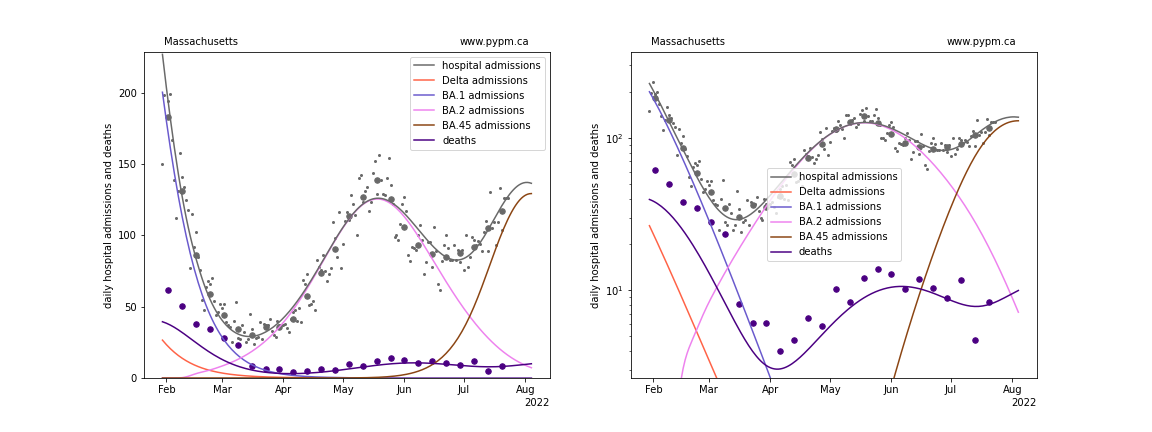
Maryland
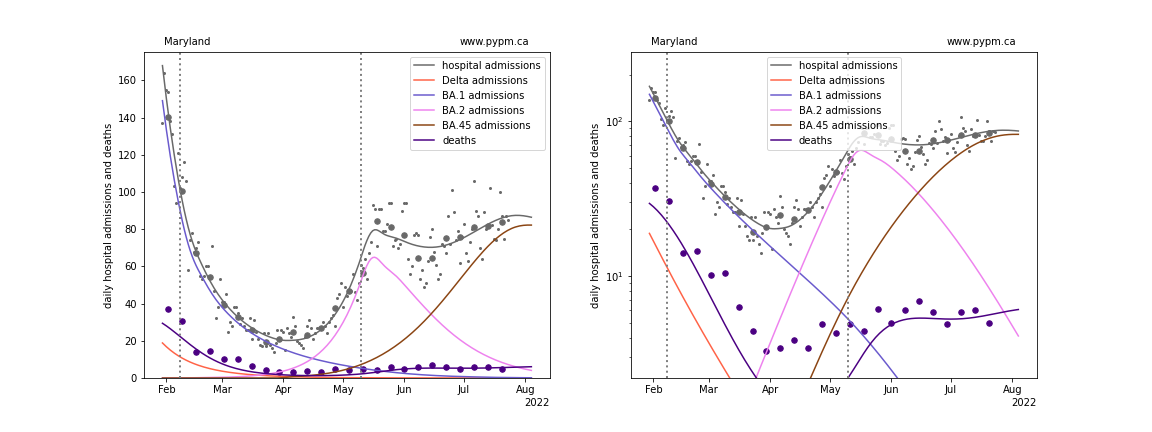
Maine
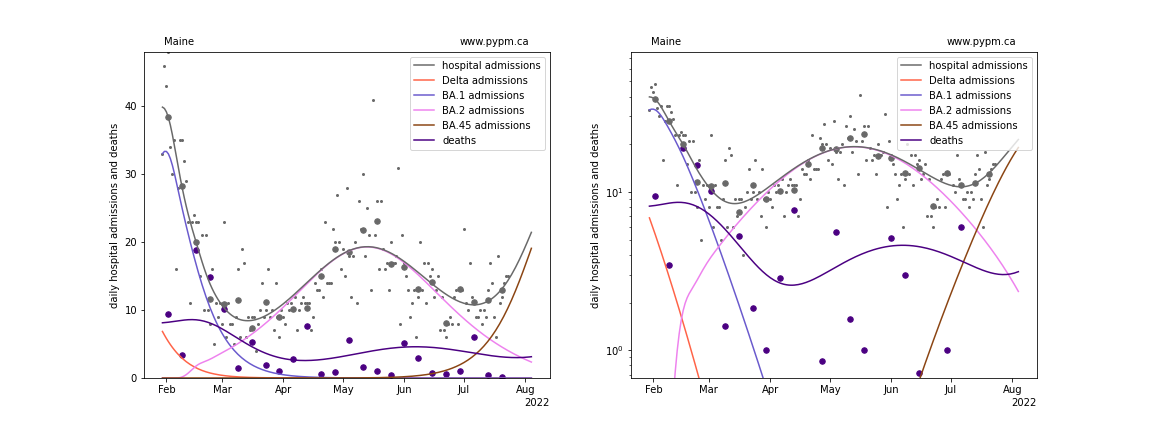
Michigan
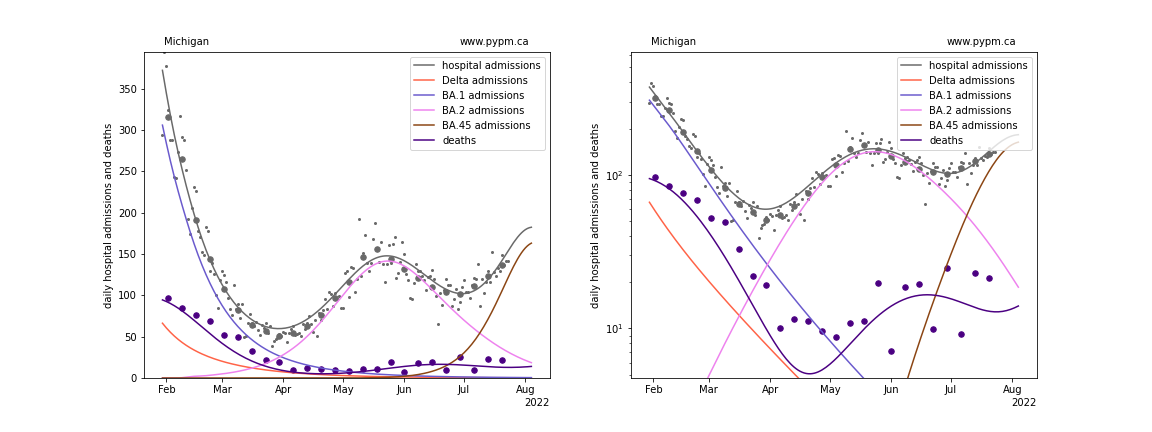
Minnesota
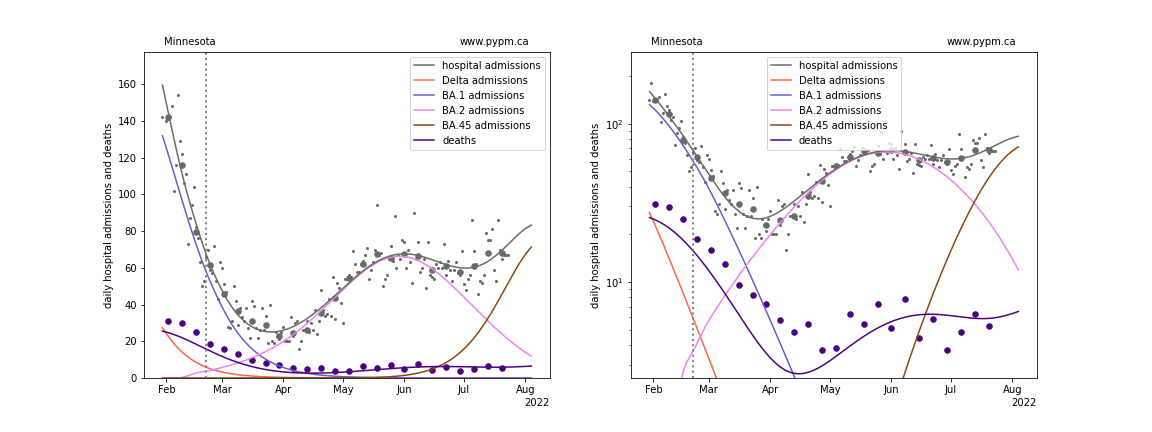
Missouri
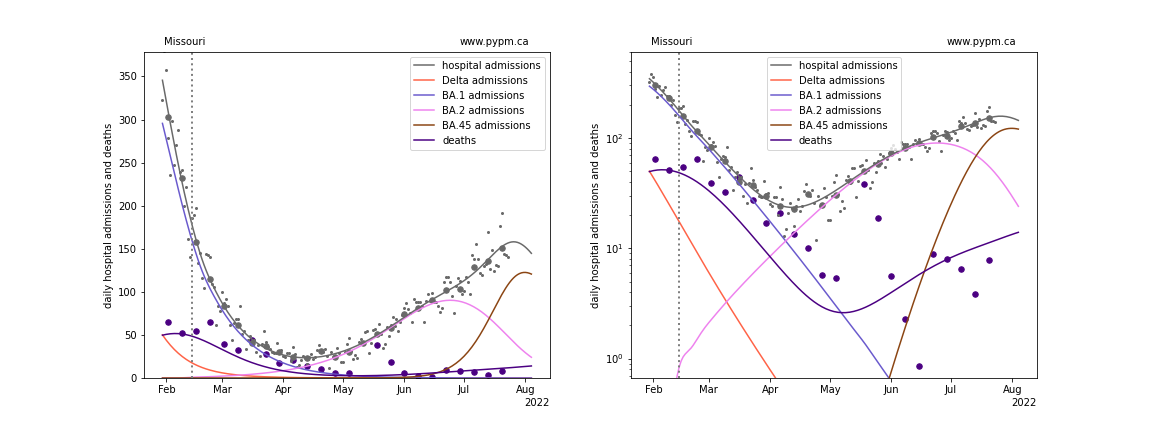
Mississippi
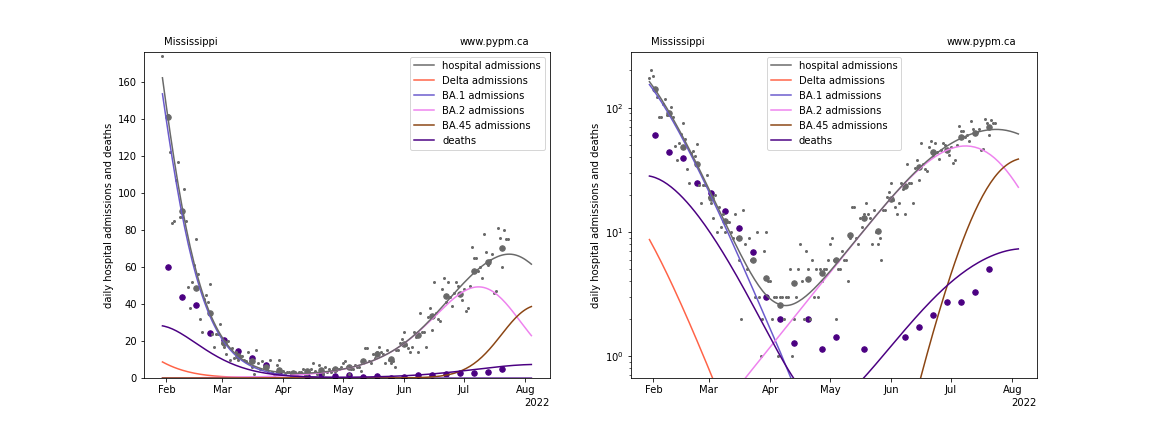
Montana

North Carolina
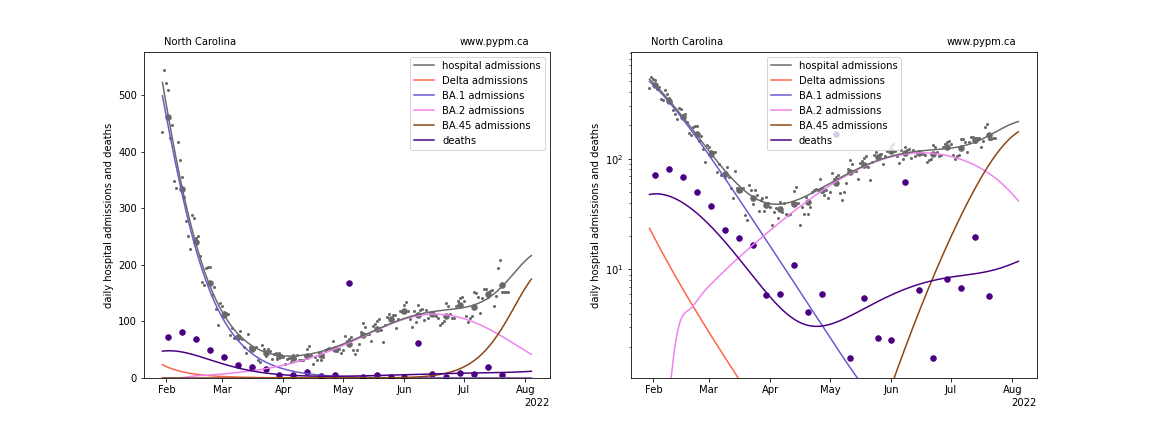
North Dakota
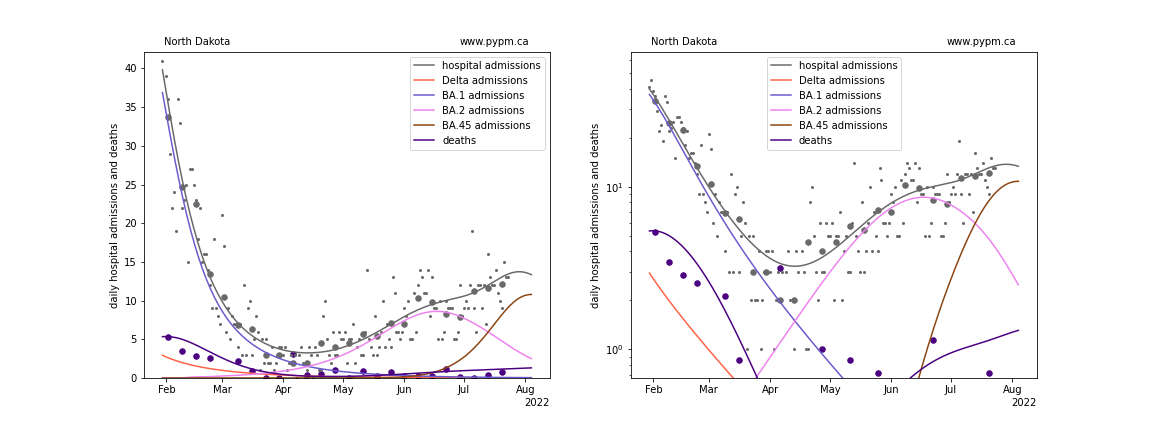
Nebraska
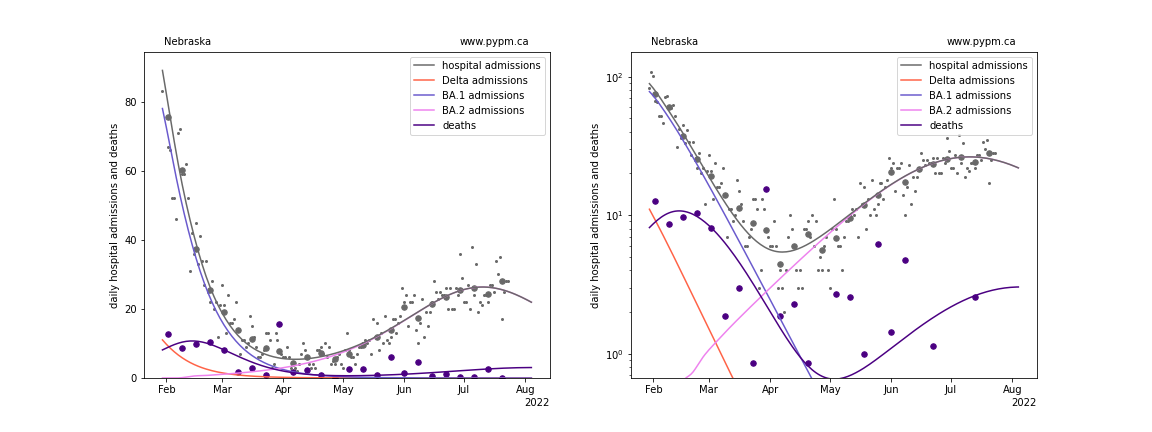
New Hampshire

New Jersey

New Mexico
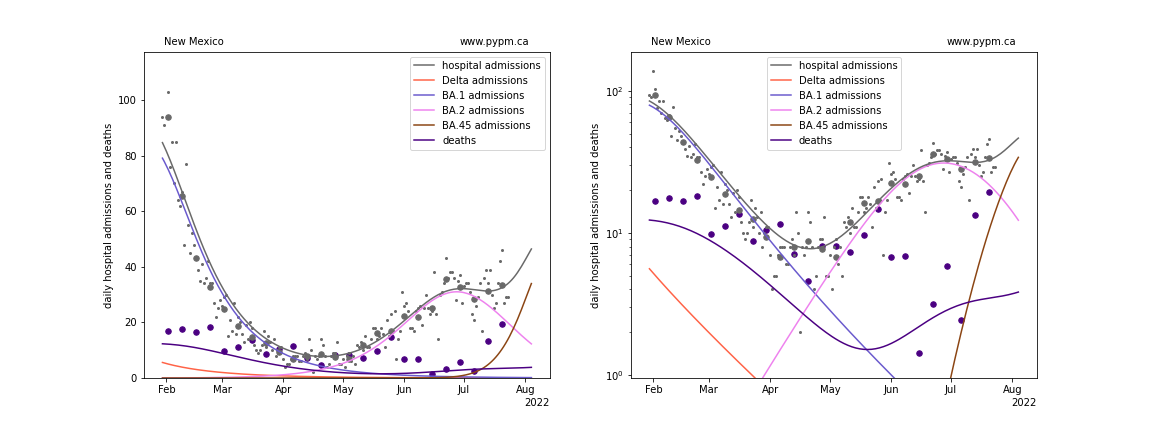
Nevada
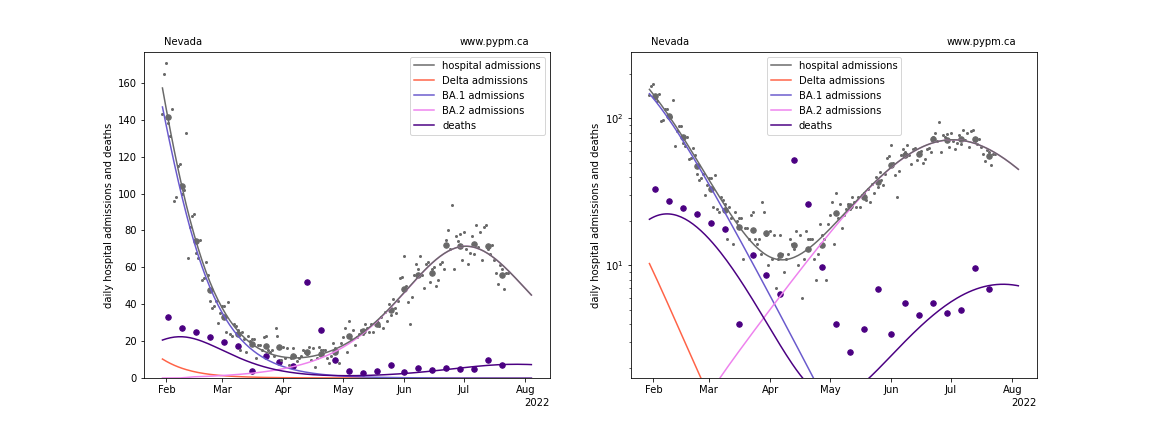
New York
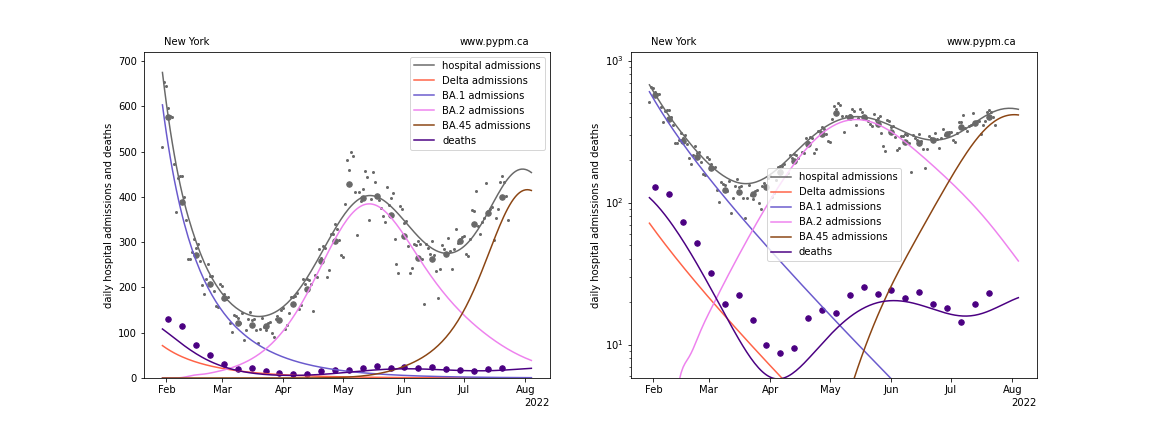
Ohio
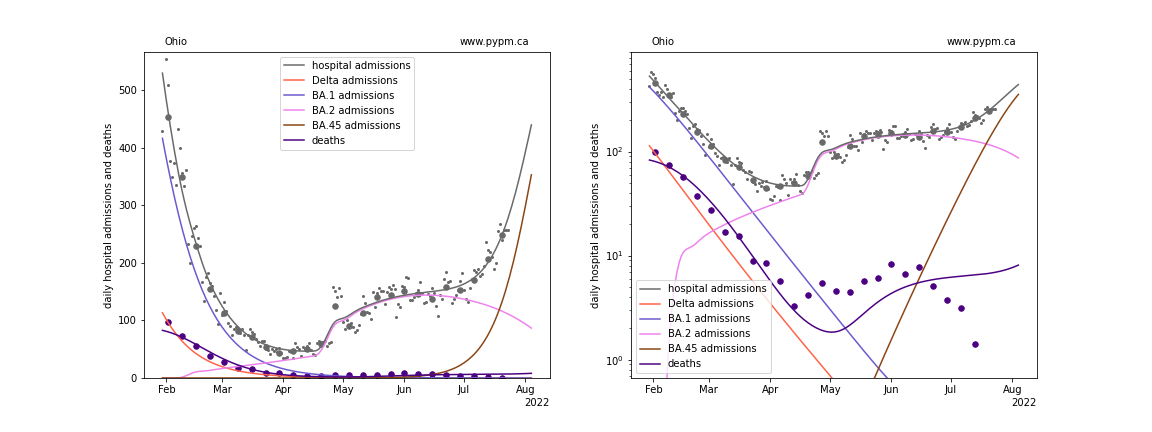
Oklahoma
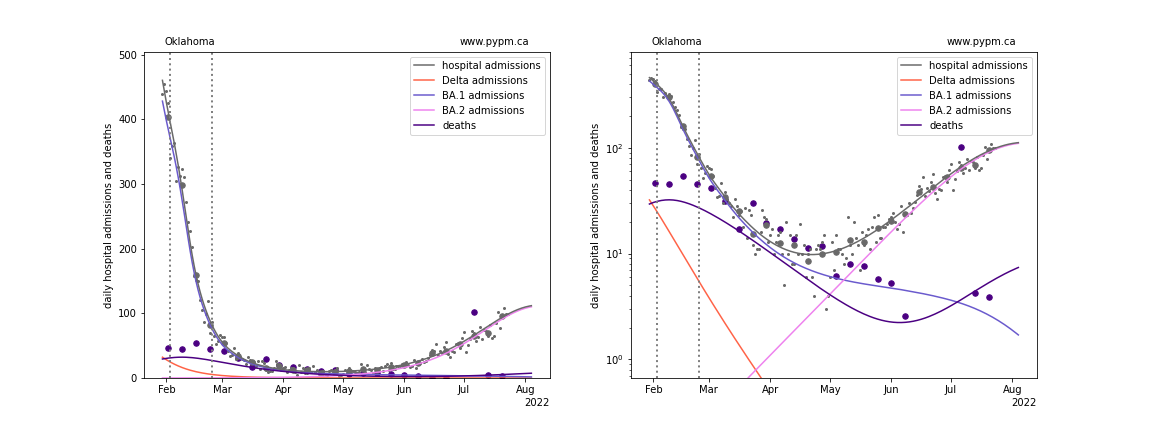
Oregon
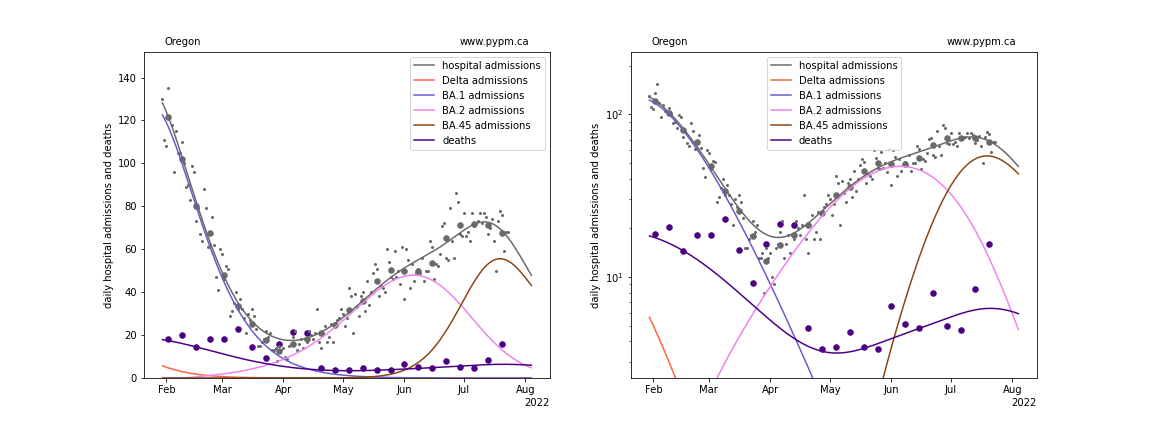
Pennsylvania
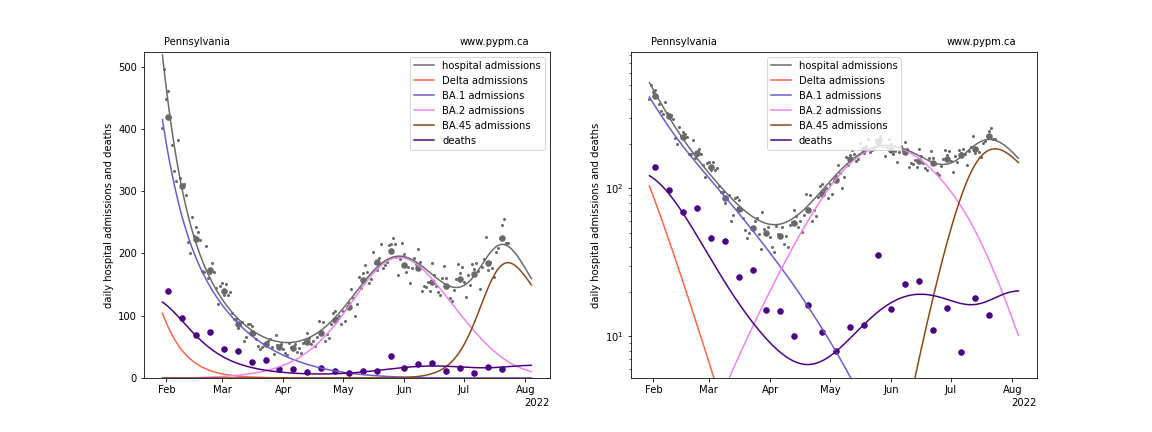
Puerto Rico

Rhode Island
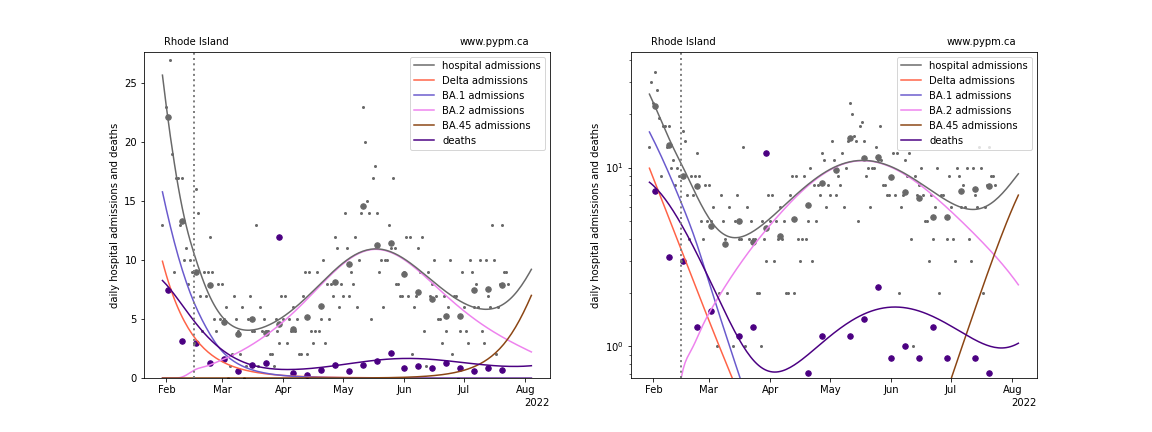
South Carolina
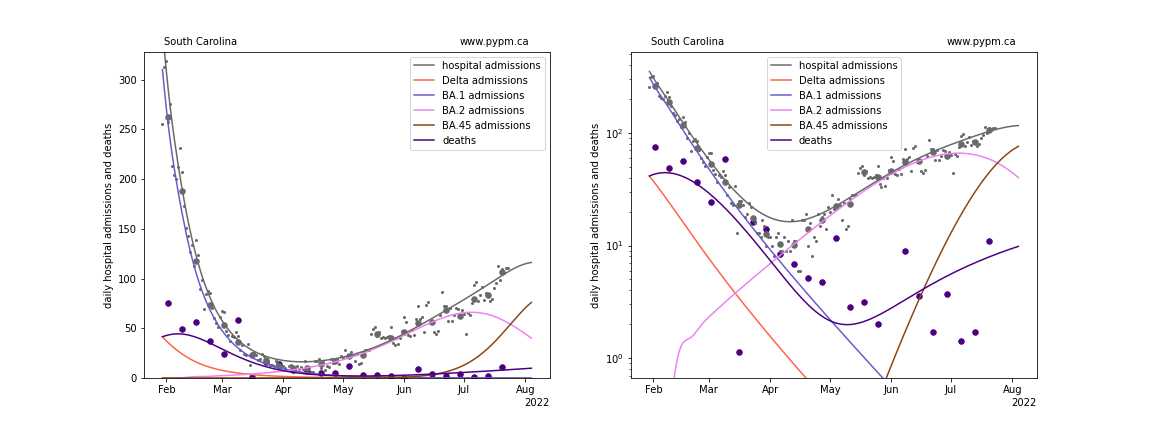
South Dakota
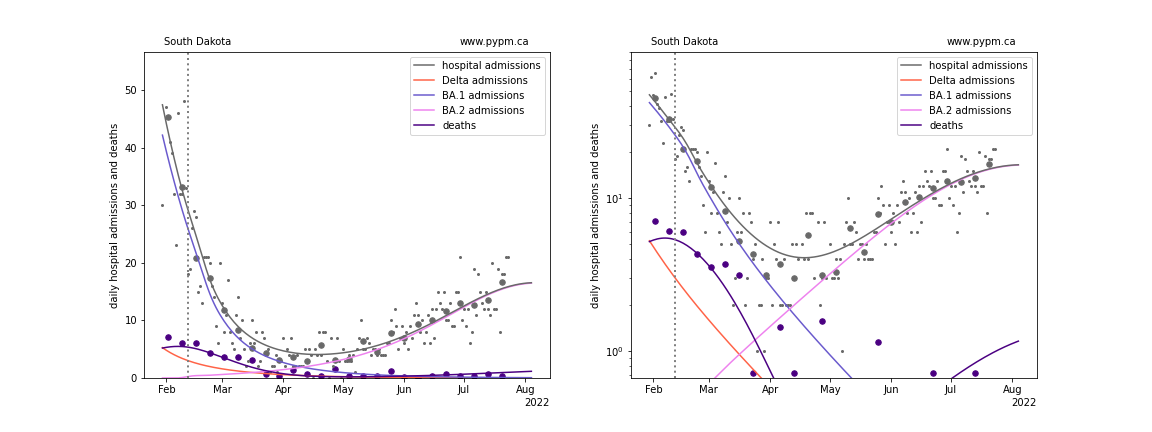
Tennessee
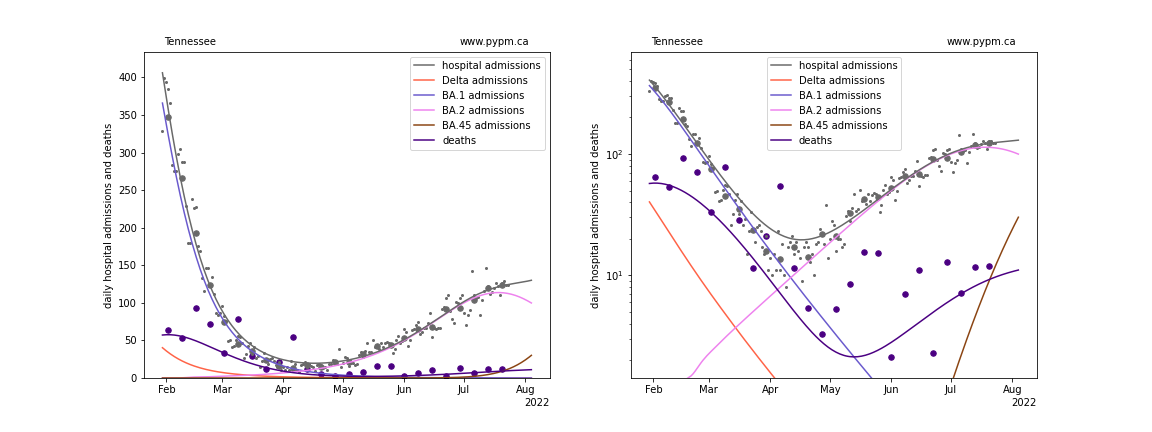
Texas

Utah
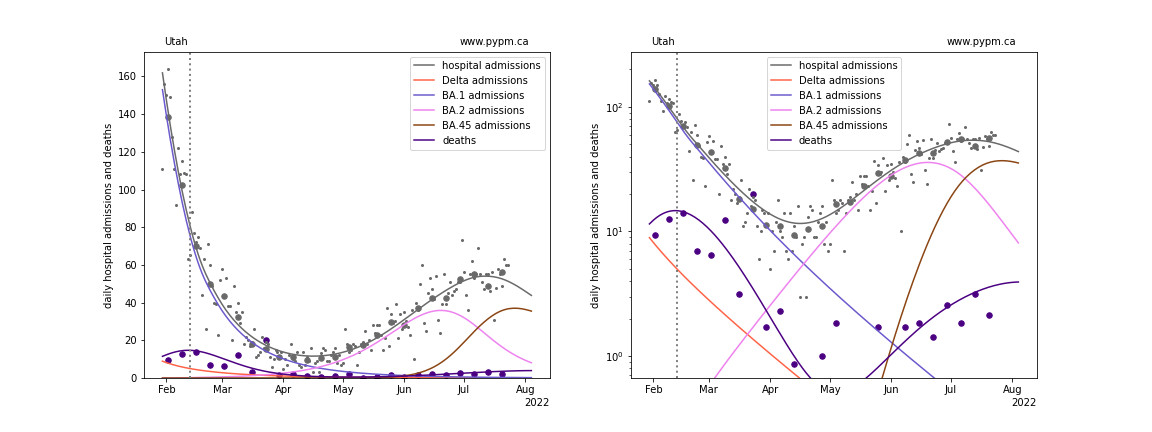
Virginia
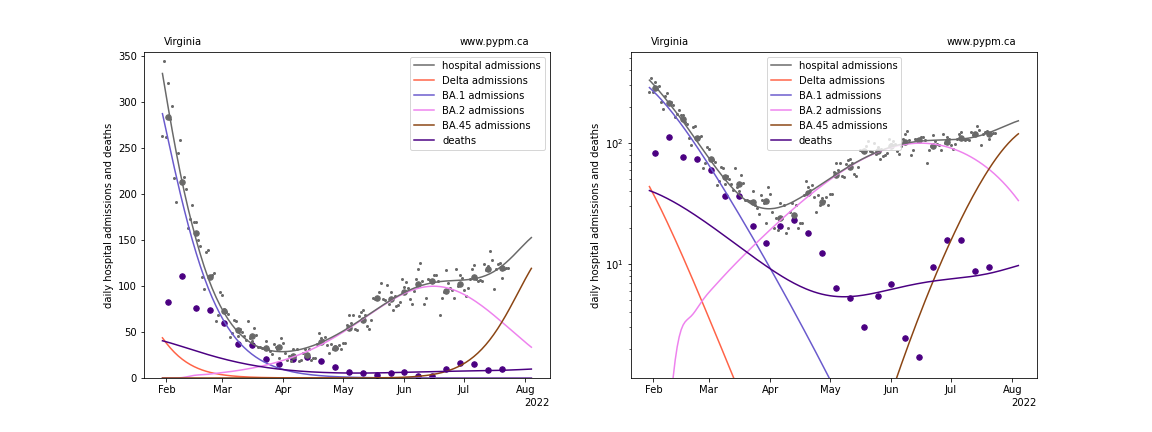
Vermont
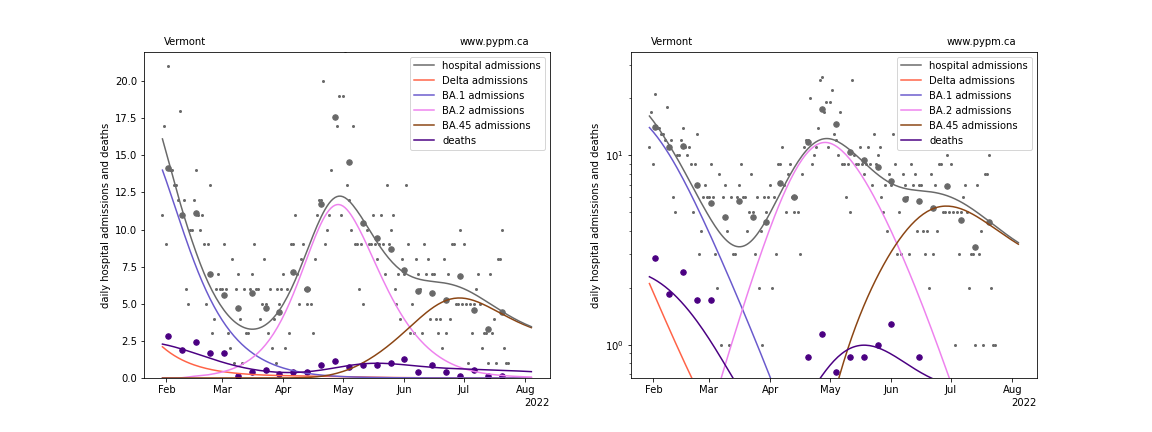
Washington

Wisconsin
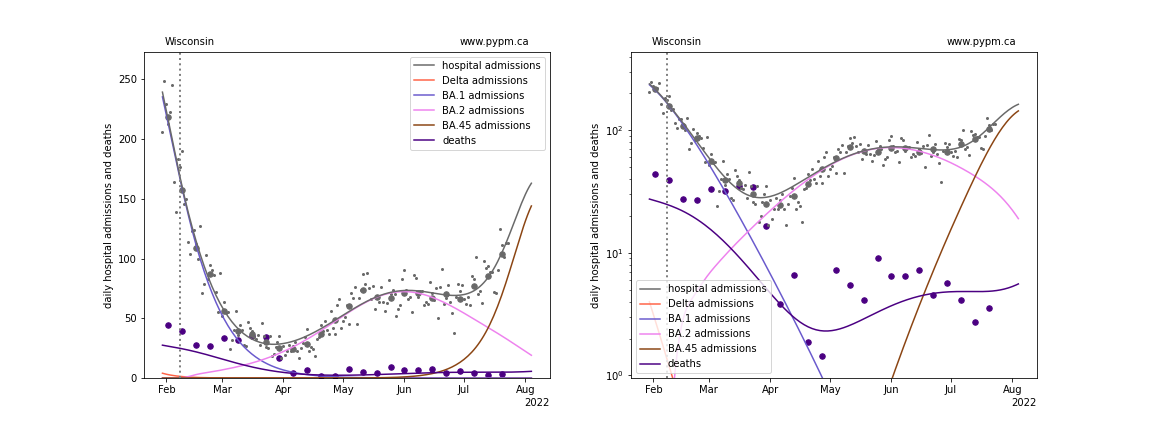
West Virginia
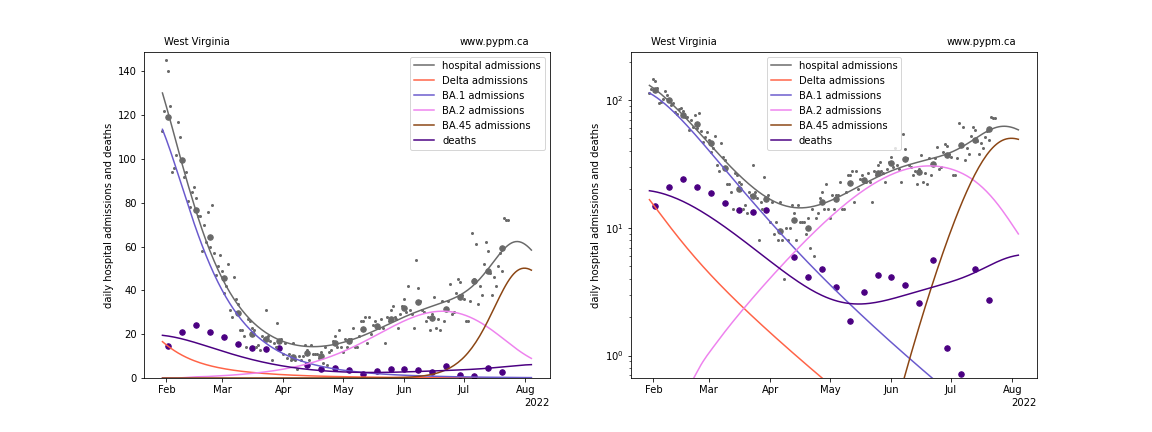
Wyoming
